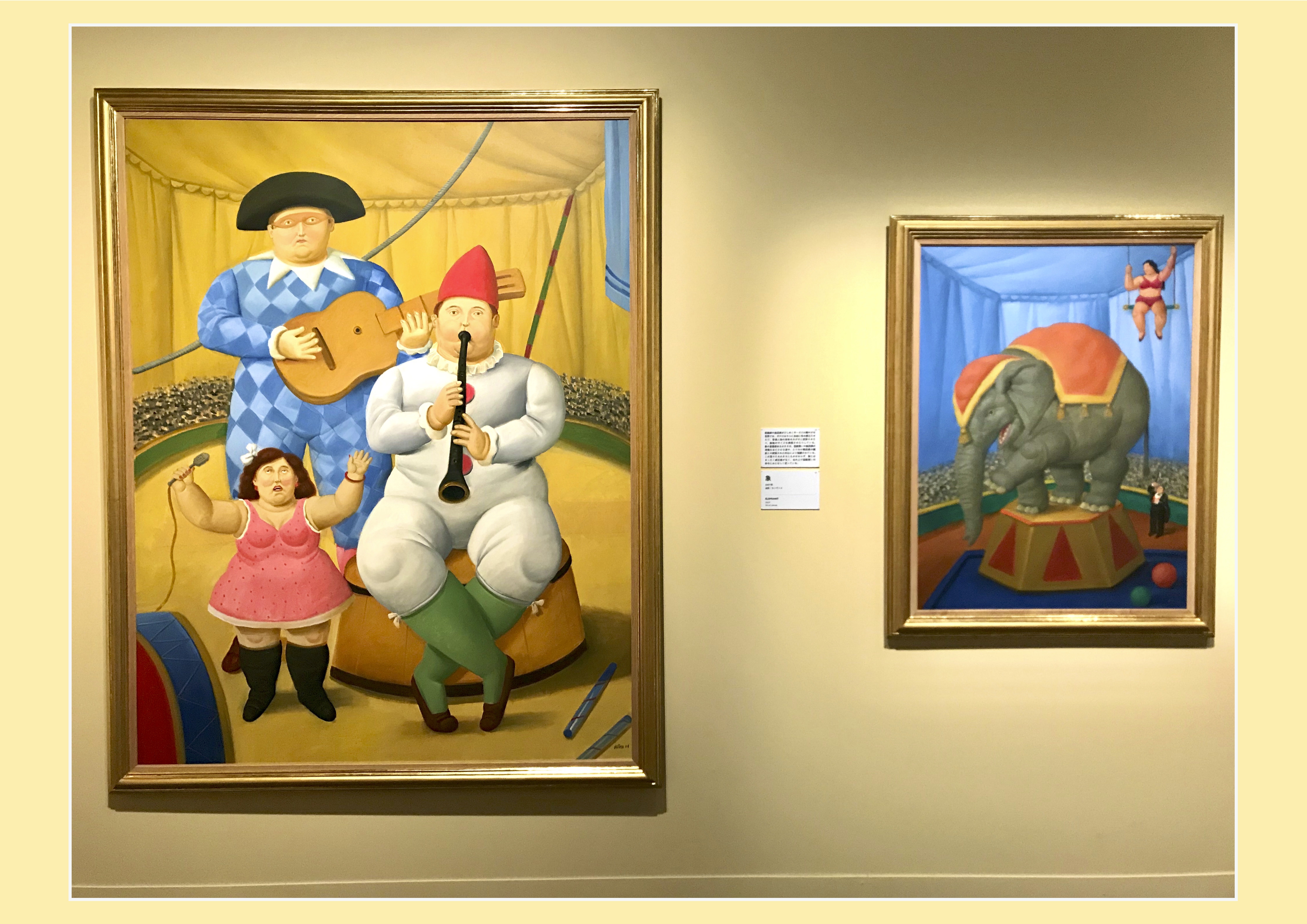The Magical Forms of Fernando Botero
"Botero: Magic in Full Form" at the Bunkamura Museum of Art, Photo: © Alma Reyes
Celebrating the Colombian painter and sculptor Fernando Botero's 90th birthday this year, the Bunkamura Museum of Art presents Botero: Magic in Full Form until July 3. The artist’s first large-scale exhibition in Japan since his last shows here in 1981, 1985, and 1995, it features around 70 works including oil paintings, watercolors, and drawings. Botero is known for portraying the daily and religious life of Latin American in a style of exaggerated volumes, vibrant colors, and sensual expressions.
Botero published his first illustrations at 16 years of age in El Colombiano, one of the major newspapers in Medellin, where he was born. The same year he held his first group exhibition. In 1951 at age 19, he launched his first solo exhibition in Bogotá. After he won second prize at the Salon Nacional de Artistas in Colombia in 1952, he traveled to Europe for three years, immersing himself in art – especially Italian masterpieces of the Quattrocento (1400-1499). This period abroad paved the way for him to develop his own techniques and to, in his words, “rationalize passion for volume, sensuality, and monumentality in art.”

“Boterismo,” the artist’s unique way of depicting roundness and hefty-looking subjects, was already evident in his early watercolor Woman Crying (1949). The female body occupies almost the entire frame, and her arms, hands, and feet emphasize a pronounced heaviness and muscularity. In 1956, Botero painted a mandolin, and while drawing a small hole in it, realized that he had created a stark contrast between large contours and minute details, making the instrument appear puffy. "I saw that making the details small made the form monumental. So in my figures, the eyes, the mouth are all small, and the exterior form is huge." He elaborates, "Through volume, it creates an uplifting feeling of life, but deformation creates an imbalance in art. It must be reconstructed, but only in a consistent fashion.” Botero’s plump characters also exude humor and a satirical element, particularly in his evocative images of priests, politicians, and saints – as seen in Saint Barbara, Saint Gertrudis, and Saint Casilda (all 2014). His style insinuates a societal tendency toward overindulgence.

Perhaps Botero’s most trailblazing work is Mona Lisa, Age Twelve (1959), which ignited an instant sensation. MoMA unveiled the young and unusually full-figured Mona Lisa in 1963, the same year Da Vinci’s original appeared publicly in the museum. Now, Profile of Mona Lisa (2020) is revealed to the world for the first time at the Bunkamura Museum of Art. She is portrayed facing sideways against a landscape background, imitating Da Vinci’s composition. In the “Versions” section of the exhibition, we view numerous parodies of renowned portraits by artists such as Velázquez, Raphael, and Goya, whom Botero has paid tribute to for their immense influence on his artistic life. Infused with jest and curiosity, works like After Piero della Francesca (Diptych) (1998) – an adaptation of the Renaissance master's Diptych of Federico da Montefeltro and Battista Sforza – feature enlarged proportions using lines and solid colors without shadows or chiaroscuro effects. This technique has been a guiding principle behind Botero’s work.


Botero’s art clearly reflects the urban life of his hometown. Also inspired by Mexican art, he captures real characters and familiar scenes from childhood memories of Latin American life – dancers, musicians, nuns, soldiers, marriages, families, and day-to-day episodes in crowded streets. He has professed a belief that "for Art to be universal, it must first be local.” The exhibition includes Our Lady of Colombia (1992), a signature painting of the Virgin Mary as a cultural icon known to Colombians regardless of educational level or social class. The work also hints at a devotion to religious figures indicative of the harsh political and social conditions in the country. (Note the tears on the Lady's face). In The Street (2000), Botero brings together folks of varied heights, ages, social classes, and skin colors, who all coexist in close quarters. The narrowness of the street helps accentuate the bulkiness of their forms.


The circus (as exemplified in Elephant, 2007 and Musicians, 2008) is also a vital element in Botero’s memories of Medellin and Mexico. He saw humanity and compassion within the eccentricity and artificiality of the circus, which he describes as "the joy of life nuanced by its difficulties…The color of the circus is quite special. No matter how crude the color you want, it still makes sense." An entire section of the exhibition is devoted to the theme of the circus.

Whether we find absurdity or reality in Botero’s interpretation of people and objects, his art speaks to the contradictions inherent in the human desire for bigger things in life. Take, for instance, the bulging bouquets of Flowers in Yellow, Flowers in Blue, and Flowers in Red (Triptych, 2006) and the podgy dancer of Ballerina on the Bar (2001). Their forms allude to a convention-defying fullness that seems difficult to imagine in this world as we know it. That is the magic of Botero.


Alma Reyes
Alma Reyes



